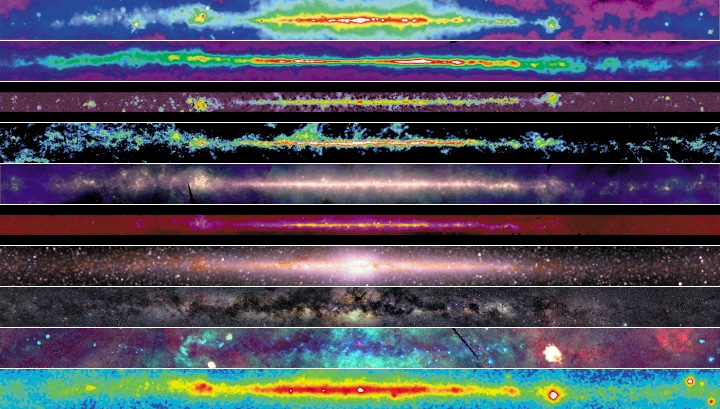The Electromagnetic Spectrum
The light you see from distant stars and other celestial objects comes from just a small portion of the existing light in the Universe. Most of the light radiating from these sources is invisible to the human eye. The classification of the different types of light is known as the electromagnetic spectrum. There are three related characteristics used in this classification: frequency, wavelength and energy. Scientists typically use energy in very high-energy astrophysics. Thus, the full spectrum ranges from the low energies of radio waves and microwaves to the mid-range energies found in infrared, optical (visible) and ultraviolet light to the very highest energies of X-rays and gamma rays. The energy range of gamma rays is so vast that it does not even have a well-defined upper limit. In fact, the gamma rays the CTAO will detect are up to around 300 trillion times more energetic than the light we see with our eyes!

How Scientists Measure Energy
The electronvolt (eV) is a unit of energy commonly used by scientists. While the light we see with our eyes has an energy of around 1 electronvolt, the gamma rays the CTAO will detect have energies of billions to many trillions of electronvolts. By detecting energies up to 300 Teraelectronvolts (TeV), the CTAO will push our view of the Universe to the edge of the known electromagnetic spectrum.


The Light Hunters
Optical telescopes have been capturing the visible light of the night sky since the early 17th century, putting the beauty of the Universe on display. To get a more complete picture of the phenomena and the physical mechanisms at work, scientists hunt with telescopes specially tuned to capture different frequencies of light. This image shows the Milky Way in different wavelengths, from radio waves at the top, to gamma rays at the bottom.
With its ability to view the highest-energy processes in the Universe, the CTAO will be a vital asset in improving our understanding of some of the most volatile and mysterious phenomena we know of or have yet to discover.
CTAO Performance
The CTAO will provide a very wide energy range, excellent angular and energy resolution and sensitivity in comparison to any existing gamma-ray detector. With its ability to detect energies between 20 GeV and 300 TeV and its unprecedented resolution, the CTAO will be able to observe further than ever before, providing a completely new view of the sky.